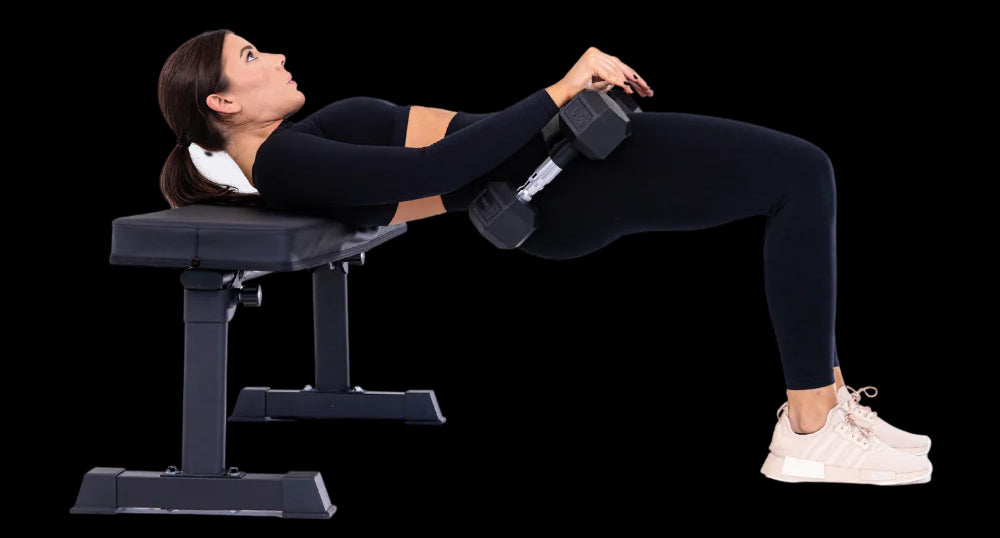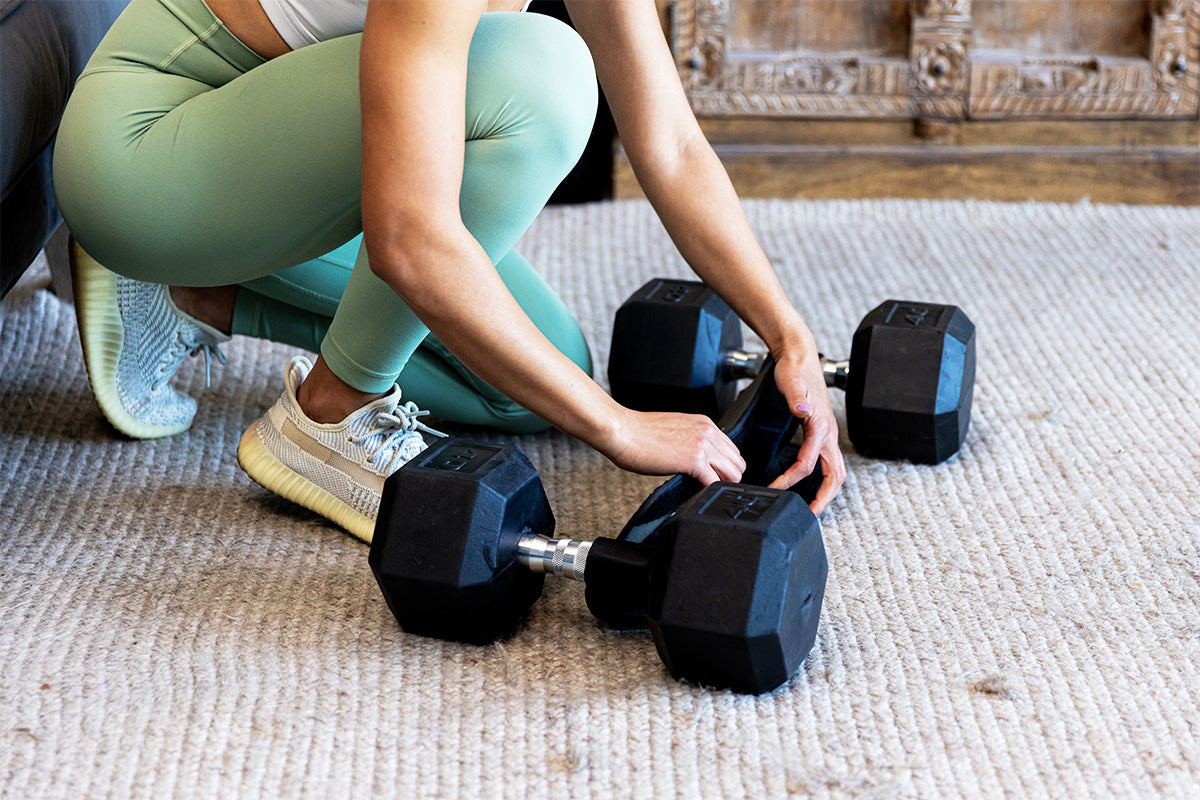Hip Thrust Range of Motion - How Low Can You Go?
Author: Shelby Lane
Hip thrusts are a popular exercise for targeting the glutes and building strength in the lower body and if you’re interested you can learn more about the benefits of hip thrusts here.
When performing hip thrusts, it's important to focus on proper form and technique to maximize results and minimize the risk of injury. One key aspect of proper form when doing hip thrusts is ensuring that you are using the correct range of motion. In this post, we'll explore what the proper range of motion is when doing a hip thrust, and why it's important!
The hip thrust is a dynamic movement that involves driving the hips upwards, while maintaining a stable core and proper alignment of the spine. To perform a hip thrust with proper range of motion, follow these steps:
Step 1: Begin by positioning yourself on a bench or other elevated surface, with your upper back resting against the bench and your feet planted firmly on the ground. Your feet should be about shoulder-width apart with your toes slightly pointed outward. Come to the top of the hip thrust to ensure your legs are at a 90 degree angle to find where your feet should be placed. You are now ready to load the exercise by placing your Belt or bar across the crease of your hips.

Having proper form on hip thrusts is critical to avoid injury and get proper glute activation!
Step 2: Keep your shoulders pressed into the bench and push through your heels to extend your hips upward. To ensure proper alignment, keep your chin tucked and your hips your hips with a slight posterior tilt. Squeeze your glutes at the top of the movement.

You should not be going all the way to the floor when you go down, but rather keep your glutes activated and go until you are near the ground.
Step 3: Lower your body back to the ground with control to repeat the movement again!
It's important to avoid overextending at the top of the movement, as this can place excessive stress on the lower back and cause injury. Instead, focus on squeezing your glutes at the top of the movement and maintaining a neutral spine throughout the exercise.

This is an over-exaggerated version of over-extending on hip thrust to illustrate the point! Make sure to keep your back straight!
The Bar vs The Bellabooty Belt and the facts behind range of motion
We see a lot of comments on social media discussing the difference in range of motion between the bar and the Bellabooty Belt and which one allows you to go lower...
But first must point out that the glute activation in a hip thrust is at the top of the movement, Not at the bottom! This is why doing variations of hip thrusts like Kas Hip Thrusts is also very effective.

We see a lot of comments on social media discussing the difference in range of motion between the bar and the Bellabooty Belt and which one allows you to go lower...
But first must reiterate that the glute activation in a hip thrust is at the top of the movement! Not at the bottom! This is why doing variations of hip thrusts like Kas Hip Thrusts is also very effective.

So to answer the question... does the Belt get less range of motion than the bar?
The true answer is that both the bar and the Belt offer a similar range of motions that both make it an effective hip thrust! Depending on the weight size with the Belt you can actually go lower with the Belt. With larger dumbbells, you still get a similar range of motion as you do with the bar due to the plates hitting the floor.

Even with 35lb dumbbells, the Belt allows you to go as low as you need to!
So while you may adjust the position of the dumbbells a bit while using the Belt, it really does not decrease your range of motion when compared to a barbell. So good news, you can hip thrust from anywhere using dumbbells and not have to worry about getting lesser of a workout!
In summary, the proper range of motion when doing a hip thrust involves driving the hips upwards until the thighs are parallel to the ground or slightly higher while maintaining proper form and control throughout the movement. Yes, you want to go as low as possible but always remember the bottom of the movement is not where the glute activation is taking place! Remember to always listen to your body and adjust the range of motion as needed to ensure proper form and safety.
Meet Your Trainer

Shelby Lane
One of the Co-Founders of Bellabooty, Shelby has a strong background in health, fitness instruction and personal training. Starting her career as a nurse, Shelby eventually transitioned into the health and wellness industry with a passion for keeping people out of the hospital. She’s been an instructor and trainer for global group fitness brands in addition to having her own clients and developing online fitness programs. She also holds certifications in fitness, nutrition, and biomechanics that give her a unique perspective on both fitness and health.
You can follow Shelby on Instagram @shelbyroselane
Looking for a more comfortable way to hip thrust? Then you'll love the Bellabooty Belt!
The Bellabooty Belt was created for two main reasons, to make hip thrusts more comfortable and more accessible. The Belt allows you to ditch the pain from the barbell and use whatever weight you have access too, meaning you can use dumbbells, kettlebells, and even plates!
Check out the photos to learn more about the Belt! It also includes a complete movement guide that shows 20+ movement variations that can be done with the Belt and it includes 3 free workouts to get you started!

The 5 Reasons Why Tempo Training Can Be Your Secret Weapon

Dumbbell Workout That's Perfect For The Home or The Gym

15 Glute Exercises For Building A Well-Rounded Lower Body

Do You Need To Lift Heavy For Hip Thrusts To Be Effective?
Subscribe
Stay current with all things Bellabooty, get helpful workout tips, and receive a 10% off coupon by signing up!






